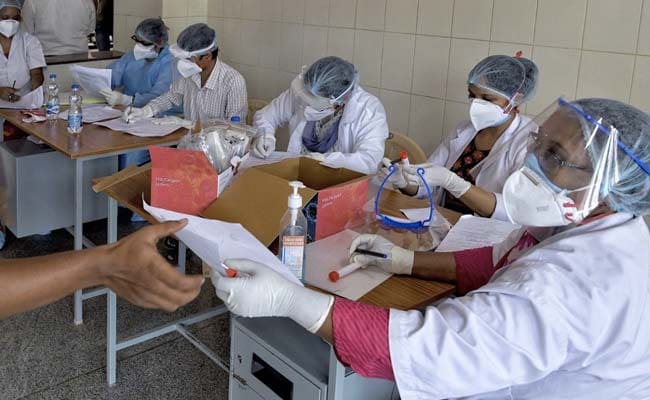This article is written by Shyna Narula pursuing a Diploma in Business Laws for In-House Counsels from Lawsikho.
Mankind always sets itself only such problems as it can solve; since, looking at the matter more closely, it will always be found that the task arises only when the material conditions for its solutions already exist or at least are in the process of formation.
-Karl Marx
Introduction
Karl Marx was an acute social critic. According to him, the problems tend to be not noticed or even taken seriously until and unless there is the availability of their resolution. While it is true that there are multiple solutions that exist for the resolution of a wide range of disputes, most people require help in fitting and fashioning those solutions of the disputes in hand. People have always turned to the law as their favoured forum and lawyers as their first preference. However, many of them become disillusioned with the lawyers and also the cost of legal services. Hence, the alternatives of the same are available. The use of dispute resolution (mediation, arbitration, facilitation, etc) is a more appropriate method adopted and has been well received in various fields such as commercial disputes, family law, and even criminal law. In the healthcare business, ADR has been a slow road to adaptation but has been greatly helpful, there are definitely positive sides to it on the horizon. This article gives an overview of dispute resolution in the healthcare business and outlines its importance, methods, and growth in India. 
Dispute resolution and its importance
The usage of dispute resolution methods/techniques has produced many promising outcomes. Alternative Dispute Resolution (ADR) is a method used in order to settle a dispute/problem outside the periphery of the complex and time-consuming litigation process. It is practiced in forms like mediation, arbitration, conciliation, negotiation, and collaborative law.
The main purpose of adopting these mechanisms is to avoid the lengthy and time-consuming litigation process. The ADR mechanism certainly in India has been termed as one of the finest and efficacious mechanisms to resolve disputes and owing to the current pandemic scenario, there are high chances of a rise in commercial disputes that can be settled through ADR mechanisms in India.
Rise of medical litigation in India
Alternative Dispute Resolution (ADR) is a great mechanism introduced in the legal system to allow settle disputes outside the periphery of the complicated and lengthy litigation process. It is practiced in forms like collaborative law, arbitration, mediation, conciliation, and negotiation.
The main purpose behind adopting such mechanisms is primarily to do away with a lengthy and also time-consuming litigation process. In India, the ADR mechanism certainly has been one of the efficacious and finest mechanisms in order to resolve disputes. Owing to the pandemic scenario currently, there are high chances of disputes to occur which can be solved via dispute resolution.
ADR mechanism in dispute resolution has been given a new scope in this pandemic. There is now an opportunity to examine the scope of the ADR mechanism and put an end to its limit as well. ADR is an arena for quick dispute resolution which will be a boon for the courts in India as it won’t be heavily burdened by the cases. Through dispute resolution justice is provided faster and as rightly said “delayed justice is denied justice.” A more serious outlook should be given to dispute resolution.
Healthcare is a potential sector that should be acquainted with the ADR mechanisms as there has been a great increase in the medical litigation in India as compared to the previous year. A survey was carried out by the National Law School of India University (NLSIU), which clearly stated that there has been a 400% increase in medical litigation due to consumer awareness. That being the scenario, there can be expected a higher rise in medical litigation in the coming years, and a definite rise in this pandemic. Thus, India should adapt itself to the ADR mechanisms and help eradicate the medical disputes in a faster and easier manner.
Scope of dispute resolution in the healthcare sector
Many healthcare providers are now stressing about including a clause of pre-dispute ADR in its admission agreement. These include the forms such as negotiation, mediation, or arbitration. The nature of healthcare disputes is also one of the important reasons for the shift in the redressal process from litigation to ADR. Healthcare disputes include cases of wrongful treatment, medical negligence, breach of trust and confidence, etc. All such cases are complex and technical in nature. Under the ADR forum the parties are given the liberty to appoint individuals to represent their case and who have the desired knowledge and experience in the area. The person appointed should be aware of the field and framework in use.
Medical Council of India and/or the Indian Medical Associations acts as the dispute redressal bodies in India. They provide experienced panels on cases for effectuating the resolution process. Whereas in other countries a proper association of professionals has been constituted for dispute resolution.
There is a need to have proper clauses and provisions in the agreements signed by the health-care users and healthcare facility providers on admission in order to promote the need of addressing the healthcare disputes through ADR mechanisms. Clauses such as mandatory negotiation, mediation, or arbitration shall be included in the agreements in case any kind of dispute arises between the parties. Guidelines that are just, fair, and uphold the conscience of the parties to the dispute should also be issued to govern the ADR mechanism’s process.
Models of alternative dispute resolution : healthcare industry
1. VA Model
The Department of Veteran Affairs (VA) instituted this model. It is a policy where a full disclosure agreement was of great importance to the model. It includes complete disclosure of all the facts related to the error along with all the actions taken in order to mitigate the menace. The disclosure of this model also contained an apology from the Chief of Staff showing acceptance of responsibility for the adverse event. Compensation in this model includes the correct surgical or medical action and/or monetary compensation. Between 1987 and 2003, 3 settlements only out of 170 settlements resulted in trials. Thus, this model suits the needs of the parties and/or patient and this method is also frequently chosen over the traditional litigation.
2. University of Michigan Model
The University of Michigan Health System adopted this policy in the year 2001. The model is purely based on fair compensation in case the medical expenses are somewhat or completely unreasonable and further led to the patient’s injury. It emphasizes learning from the mistakes and further improving the experiences of the patient. It includes an open discussion that is related to the mistakes/errors made/caused by the medical staff. This policy has majorly been successful.
3. Pew Mediation and ADR Model
This model was adopted in the year 2002 in four Pennsylvania healthcare systems. It is mainly focused on improving the communication between patients who are in distress and the physicians, use of mediation to settle potential claims, briefing disclosure conversations. In this model, the process facilitates discussion and further increases the transparency between the patient and the physician.
4. Rush Model
This model was developed in the year 1995 at Chicago’s Rush Medical Centre. It is by far the most widely used model worldwide in mediation. The process under this model begins by an early exchange of pre-mediation agreement submissions, brief presentations from both sides, and deciding the caucus procedures. The plaintiff selects the mediators who act as immense motivation for them in order to take part in the whole process. Over 80% of the cases that implemented this particular model were successful and were also resolved within a year of filing the complaint.
Globally there are many different Models of ADR in the healthcare industry. They are widely available as a precedent for all countries. The Indian healthcare providers can select any model that best suits them and adopt the same according to their functionality. Along with the above-mentioned models, there have been other models as well which have shown a commendable result. Such models have proved to be patient-friendly and are also seen as cost-effective in nature. India has seen a huge surge in medical litigation, working on such models by adjusting them according to the needs of the Indian legislative periphery can be a huge success and less burden on the courts of India.
Why mediation and arbitration over lawsuit litigation?
Alternative Dispute Resolution (ADR) mechanisms provide many benefits, more than normal litigation.
1. Less time-consuming
Various studies and surveys have proved that arbitration hearings require at max two to four days whereas court hearings require several weeks in traditional litigation. The very same study showed that the medical malpractice disputes took about nineteen months on average for medical malpractice arbitration and about thirty-three months for normal litigation. It has been clearly seen that ADR in comparison to the normal court proceeding is less time-consuming and has a faster process.
2. Less expensive
Studies have shown that disputes related to medical malpractices are costlier than ADR if solved through traditional litigation. The cost of the proceedings, lawyers and many more take up half of the expense whereas ADR does not require too much input of money.
3. Mediation and arbitration is fair
There have been various commentators who have concluded and stated that individuals do well in arbitration or mediation as compared to that of litigation, if not better. The trend has been changing in India. Individuals have now started receiving monetary awards/compensations in arbitration similar to those provided in courts. 93% of the people in a group study believed firmly that their cases were handled rather fairly and also without any bias or malpractices in arbitration and mediation.
Conclusion
The Supreme Court of India has time and again stressed the need for adopting ADR mechanisms over litigation as a mode of settling disputes. In the case of Food Corporation of India v. Joginder Mohindarpal, the Supreme Court stated that “Arbitration has a great urgency today when there has been an explosion of litigation in the courts of law established by the sovereign power.” A sudden shift from litigation to ADR, in India, in the healthcare sector will not be easy as the sector has divergent cultures and includes value systems with an imbalance of power and control and widespread inequalities.
However, there is definitely a firm need/requirement to address all the technicalities for ensuring a smooth functioning ADR mechanism for most of the healthcare disputes that should offer open communication and also prompt solutions in a very transparent manner. The benefits of ADR should not be undermined at all and therefore, a proper Indian model shall be created in order to engulf ADR in the healthcare sector as soon as possible so that more reliance can also be put on such mechanisms that do not tend to shake or break the conscience of the society.
References
- https://health.economictimes.indiatimes.com/news/industry/medical-litigation-cases-go-up-by-400-show-stats/50062328
- https://shodhganga.inflibnet.ac.in/bitstream/10603/190313/9/09_chapter-4.pdf
- https://www.jurist.org/commentary/2020/05/yug-sinha-healthcare-arbitration/
- https://www.mediate.com/articles/robmorr1.cfm
- https://www.psqh.com/julaug08/resolution.html
Students of Lawsikho courses regularly produce writing assignments and work on practical exercises as a part of their coursework and develop themselves in real-life practical skills.
LawSikho has created a telegram group for exchanging legal knowledge, referrals, and various opportunities. You can click on this link and join:











